#Lisboa statues
Text
Portraits of Lisboa
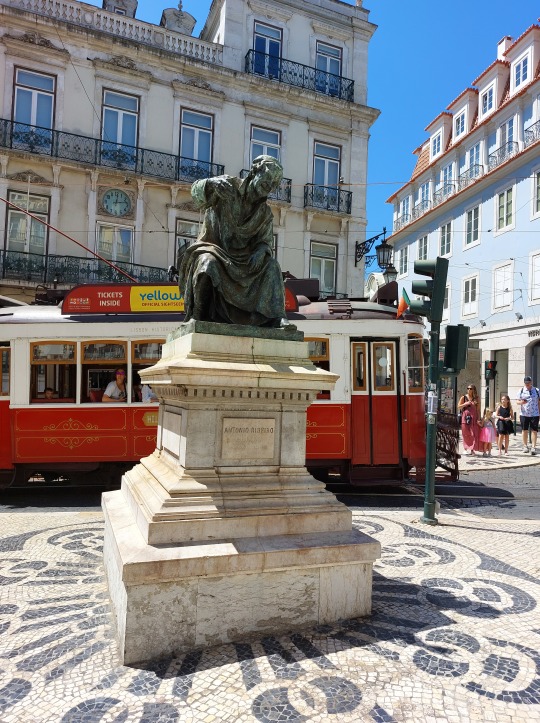
View On WordPress
2 notes
·
View notes
Text
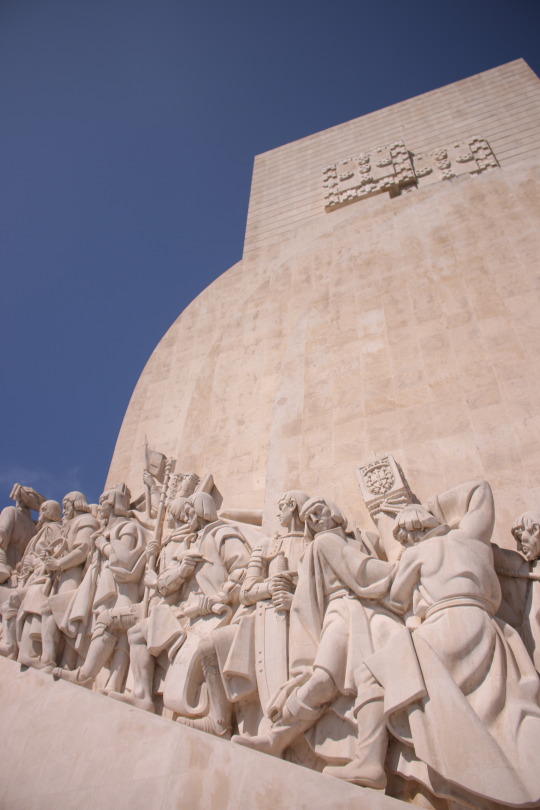


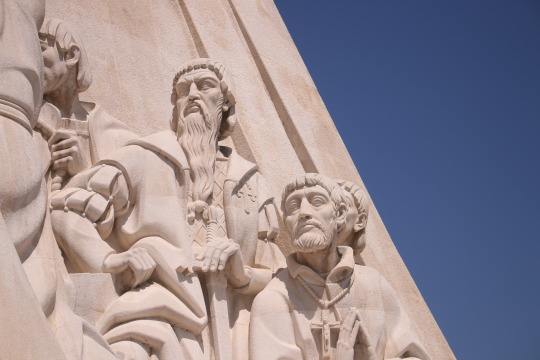
Padrão dos Descubrimentos, Lisboa, Portugal, 2-06-23
#Padrão dos Descubrimentos#Lisboa#Portugal#2-06-23#age of sail#monument#monumental#stone#sculpture#fine arts#tw: colonialism#statue#photo#photography#photographers on tumblr#aesthetic#aesthetics
28 notes
·
View notes
Photo
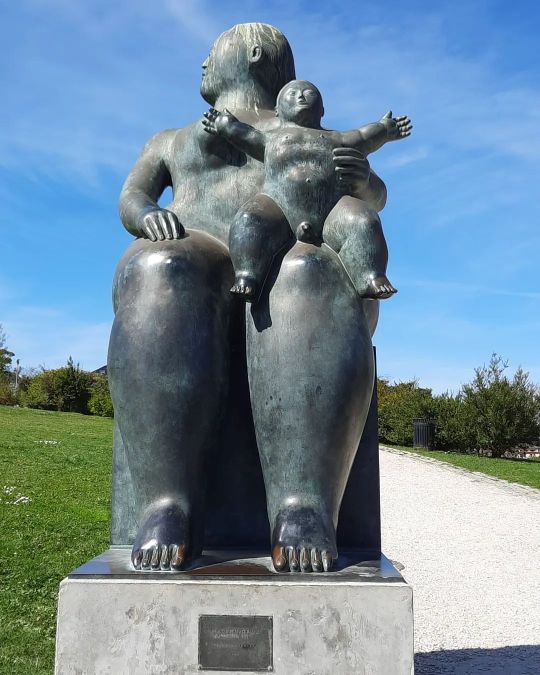
#maternidade #fernandobotero #lisboa #maternity #statue #amaliarodrigues #garden (la Jardim Amália Rodrigues) https://www.instagram.com/p/Cp_BygXLGF4/?igshid=NGJjMDIxMWI=
2 notes
·
View notes
Text

3 notes
·
View notes
Text





Feast of St. Anthony
The Feast of St. Anthony is observed every year on June 13 to honor the life and work of St. Anthony of Padua, who accomplished many things during his short time in this world as a priest. He was revered by his contemporaries and noted for his powerful preaching, vast knowledge of scripture, and undying love and devotion to the poor and the sick. They made him one of the most quickly canonized saints in church history. His fame spread through Portuguese evangelization and he became the patron saint of Lisbon, Padua, and many other places in Portugal. St. Anthony is invoked and respected around the world as the patron saint for the recovery of lost items. He is credited with several miracles involving lost people, things, and even spiritual goods.
History of Feast of St. Anthony
St. Anthony of Padua was born Fernando Martins de Bulhões to a wealthy and prominent family in Lisbon, Portugal on August 15, 1195. His father, Martin de Bouillon, was a descendant of Godfrey de Bouillon, commander of the First Crusade, while his mother, Theresa Tavejra, was a descendant of the fourth king of Asturia, Froila I.
Anthony was educated at the Cathedral School of Saint Mary near his house, where his teachers suggested that he become a knight at the king’s court. However, his father believed Anthony was better suited to intellectual pursuits and wanted him to help manage the family’s estate and become a nobleman. To his father’s dismay, Anthony joined the Canons Regular of St. Augustine when he was 15 and entered St. Vincent’s convent of Lisbon in 1210. Anthony soon asked to be transferred to the Holy Cross Monastery in Coimbra where he spent eight years studying theology and was later ordained a priest. During this period, he befriended many friars following Francis of Assisi, who built an order of friars and traveled extensively, preaching to non-believers.
In 1220, he joined the Franciscan order inspired by five Fransicians who were martyred in Morocco. He, too, hoped to preach to Muslims and be martyred. On his way to Morocco, he became seriously ill and was forced to return home, but his ship back to Portugal was blown off course and finally landed in Sicily. Because of his deteriorating health, he was not allowed to pursue missionary work. Instead, he taught theology in Bologna, Italy; and at Montpellier, Toulouse, and Puy-en-Velay in southern France. He won great admiration as a preacher and was noted for his simple yet profound teaching of the Catholic faith. He died on his way to Padua, Italy on June 13 in 1231.
Feast of St. Anthony timeline
1195
Saint Anthony is Born
St. Anthony of Padua is born Fernando Martins de Bulhões to a wealthy and socially prominent family in Lisbon, Portugal.
1220
The Franciscan Order
Anthony joins the Franciscan order, hoping to preach to Muslims and be martyred.
1231
Saint Anthony Passes Away
Anthony becomes sick with ergotism and dies on June 13 on the way to Padua, where he is now buried.
1232
Canonization
Anthony is canonized by Pope Gregory IX on May 30, 1232, at Spotelo, Italy for his spiritual teachings and devotion to the Church.
Feast of St. Anthony FAQs
What do you eat on St. Anthony’s day?
Spaniards are fond of beans and prepare them in many ways. Bean and Escarole Soup with or without pasta is often cooked in Spanish families and is offered to the poor on St. Anthony’s Day after Mass.
Where is the town of Braham located?
St. Anthony had a prized and expensive book of psalms that went missing and he thought was probably stolen. He prayed that the book would be found. A novice who had taken the book suddenly returned it and even returned to the order. The stolen book is said to be preserved in the Franciscan friary in Bologna, Italy.
Why is St. Anthony often painted with a baby?
The baby in the paintings depicts Baby Jesus and is reminiscent of the vision that Anthony had in Camposampiero. It expresses his attachment to the humanity of Christ and his closeness to God.
How to Observe Feast of St. Anthony
Go to church: Visit the church on this holy day to feel closer to God and to ponder upon St. Anthony’s spiritual teachings. Dedicate the day to learning more about his preaching and incorporate it into your life for a more fulfilling life.
Help the needy: Follow St. Anthony’s teachings of devoting yourself to the sick and the poor by donating money, helping out at soup kitchens, and spending time with those less fortunate than you. Any amount of time devoted will be appreciated.
Celebrate at home: Have a wholesome family dinner with your close family members by cooking up a delicious homecooked meal. Read more about his teachings in the many books written about him and share these fascinating stories with your children.
5 Remarkable Facts About St. Anthony
He preached to the fish: St. Anthony was once seen preaching to fish in Rimini to the surprise of non-believers, but soon a large crowd of fish had gathered to listen to him.
Marriage saint: He is known as a marriage saint in Portugal, Spain, and Brazil because legends exist of him reconciling couples.
Feast of all Feasts: ,Boston’s North End holds a feast every year on the weekend of the last Sunday in August in honor of St. Anthony called the "Feast of All Feasts."
Celebrated follower of Francis of Assisi: St. Anthony’s fame spread with Portuguese evangelization and he is known as the most celebrated follower of Francis of Assisi.
Poisoning: According to a story, St. Anthony’s food was poisoned by non-believers who challenged him to eat the food anyway —-which he did after blessing the food and coming out unharmed.
Why Feast of St. Anthony is Important
St. Anthony helped the poor and the sick: St. Anthony quickly became a champion of the poor in Padua. Among other acts, he influenced the local government to pass legislation that protected the poor from going to prison if they could not repay their debts.
He was a great orator: His presentations were so forceful, simple, and eloquent that he was asked to preach all over Italy and the regions of France. His theological expertise and inspirational oration also impressed the leader of the order, St. Francis, who enlisted Anthony to teach theology to other Franciscans. This was a unique honor, as he would have a huge impact on the order’s future and the Church.
He is celebrated all over the world: From the Americas to Asia to Africa, St. Anthony is revered all over the world. Outside of Europe, there are churches dedicated to him in Texas, Tamil Nadu and Goa in India, and the Philippines, among other places. He also inspired many artists who painted him frequently.
Source
#Statue of Santo António de Lisboa by Soares Branco#St Anthony's Church#Church of Saint Anthony of Lisbon#Igreja de Santo António de Lisboa#Flowerwall by Susana Barros#Feast of St. Anthony#13 June#travel#architecture#exterior#cityscape#tourist attraction#landmark#original photography#summer 2021#Lisboa#Lisbon#Portugal#Southern Europe#vacatioh#public art#sculpture#Parede de flores#Fernando de Bulhões#FeastofSt.Anthony
0 notes
Text

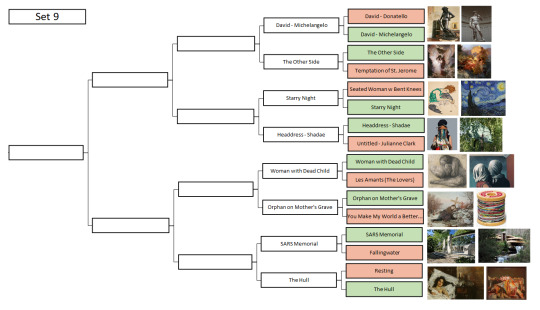

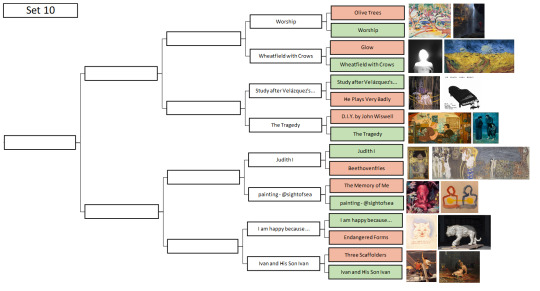









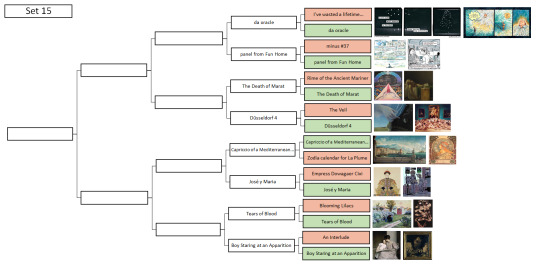
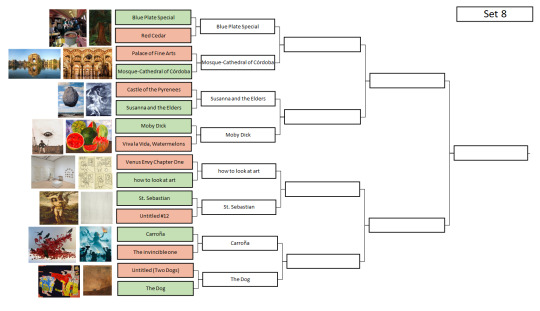

Behold, a bracket!
Text form below the cut because trying to copy all the 256 into the alt text sounded.... horrifying. Warning for 128 matchups, seriously, this list is long, and so I've avoided adding the artists until the polls.
a note: the pinned post has started misbehaving, so only open polls will be directly linked. closed polls instead have the results page linked in the set header, all the polls are linked from there
Set 1
The Lament for Icarus (Miao He) vs The Lament for Icarus (Herbert Draper)
The angel came to me in a fever hallucination, perched upon my bed as I returned from the bathroom. vs Sweet Brown Snail
Figures vs A Philosopher Lecturing on the Orrery
Happy Shoppers vs Hubble Deep Field
Lovers Painting vs Bath Curtain
Dr. Helen Taussig vs Une Martyre
Orangoutang étranglant un sauvage de Bornéo (Orangutan strangling a Borneo savage) vs Can’t Help Myself
Rape vs Technicolor Hiroshima
Set 2
A Walk at Dusk vs Based on “Autoportrait with the Model” by Maria-Rayevska Ivanova
Diary Page vs Les Jours Gigantesques (The Titanic Days)
Dead of Night vs You Won't
Christina's World vs Bobby
Untitled (I’m Turning Into A Specter Before Your Very Eyes And I’m Going To Haunt You) vs Two Sisters (On the Terrace)
Sharecropper vs Lustmord
The Parca and the Angel of Death vs Untitled (Zdzisław Beksiński)
Stress vs The Fallen Angel
Set 3
Device to Root Out Evil vs Travelling Light
Diana vs Fifty Days at Iliam: The Fire that Consumes All before It
The Plains, from Memory vs Exotic Bodies
Doubting Thomas vs Self-Portrait in the Bathroom Mirror
Empty Nest vs Somebody Fell From Aloft
Anguish vs If I Died
Cat in Obsolete Bath vs You're Not Boring Anymore
Salvator Mundi (Savior of the World) vs Untitled (billboard of an empty unmade bed)
Set 4
There Will Be No Miracles Here vs Symphony of the Sixth Blast Furnace
Fox Hunt vs Tarpaulin
Khajuraho Group of Monuments vs Ranakpur Jain Temple
ปราสาทสัจธรรม (The Sanctuary of Truth) vs Grande Panorama de Lisboa
Heroic Head of Pierre de Wissant, One of the Burghers of Calais vs The Weather
The Daughters of Edward Darley Boit vs If this is art
Statue of Vincent and Theo van Gogh vs Jeanne d’Arc écoutant les voix (Joan of Arc listening to the Voices)
Fountain vs Judith Slaying Holofernes
Set 5
Cueva de las Manos (Cave of Hands) vs Cave of El Castillo
Chauvet Cave Bear vs Uffington White Horse
Laocoön and His Sons vs Winged Victory of Samothrace
Crouching Aphrodite vs Statue of Taweret
Guardian Figure vs Kūya-Shonin (Saint Kuya)
Ancient Greek doll vs Arena #7 (Bears)
Enbu (炎舞) (Dancing in the Flames) vs Yearning Shadows
Belfast to Byzantium vs Freedom
Set 6
The Kama Sutra of Vatsyayan vs Portraits
The Blood Mirror vs Nighthawks
Electric Fan (Feel it Motherfuckers): Only Unclaimed Item from the Stephen Earabino Estate vs "Untitled" (Portrait of Ross in L.A.)
Lady Agnew of Lochnaw vs Forgotten Dreams
Saint Bride vs Pixeles (a group of 9 works)
War Pieta vs The Sunset
The Handmaidens of Sivawara Preparing the Sacred Bull at Tanjore for a Festival vs Ajax and Cassandra
Nāve (Death) vs Abstraction
Set 7
Yes vs Meeting on the Turret Stair
Hacked to Death II vs Stańczyk
Closeness Lines Over Time vs Voice of Fire
The Maple Trees at Mama, the Tekona Shrine and Tsugihashi Bridge vs Portrait of Sir Thomas More
Survival Series: In a Dream You Saw a Way vs Takiyasha the Witch and the Skeleton Spectre
Death blowing bubbles vs The Kitchen Table Series
Painting 1946 vs In the Grip of Winter
Untitled (Black and Gray) vs NAMES Project AIDS Memorial Quilt
Set 8
Blue Plate Special vs Red Cedar
Palace of Fine Arts vs Mosque–Cathedral of Córdoba
Le Château des Pyrénées (The Castle of the Pyrenees) vs Susanna and the Elders, Restored - X-Ray
Moby Dick vs Viva la Vida, Watermelons
Venus Envy Chapter One (Of the First Holy Communion Moments Before the End) vs how to look at art
St. Sebastian vs Untitled #12
Carroña vs The invincible one
Untitled (Two Dogs) vs The Dog
SECOND HALF
Set 9
David (Donatello) vs David (Michelangelo)
The Other Side vs The Temptation of St. Jerome
Seated Woman with Bent Knees vs Starry Night
Headdress - Shadae vs Untitled for the Image Flow's Queer Conscience exhibit
Woman with Dead Child (Frau mit totem Kind) vs Les Amants (The Lovers)
Siroče na majčinom grobu (Orphan on Mother's Grave) vs You Make My World a Better Place to Find
Fighting Against SARS Memorial Architectural Scene (弘揚抗疫精神建築景觀) vs Fallingwater
Resting vs The Hull
Set 10
Olive Trees vs Worship
Glow vs Wheatfield with Crows
Study after Velázquez's Portrait of Pope Innocent X vs Untitled (He Plays Very Badly)
D.I.Y. by John Wiswell vs The Tragedy
Judith and the Head of Holofernes vs Beethovenfries (Beethoven Frieze)
The Memory of Me (How Could I Forget) vs oh god i had a really big epiphany about love and personhood but i’m too drunk for words
I am happy because everyone loves me vs 瀕危形態 (Endangered Forms)
Three Scaffolders vs Ivan the Terrible and His Son Ivan
Set 11
San Giorgio Maggiore at Dusk vs Water-Lilies, Reflection of a Weeping Willow
The Grief of the Pasha vs Monolith in Vigeland Sculpture Park
Passion vs Space Diner
Hamlet and Ophelia vs Two Earthlings
Ellen Terry as Lady Macbeth vs Seer Bonnets
Photograph from "SNAP OSAKA" Collection vs Clytemnestra after the Murder
“Untitled” (Perfect Lovers) vs The Lovers (TIE)
Kedai Ubat Jenun vs Orange Store Front
Set 12
The Apotheosis of War vs Portrait of the Dancer Aleksandr Sakharov
Julie Manet vs Mouth
The Icebergs vs Kaleidoscope Cats III
Maman vs Caza Nocturna (Night Hunt)
The Book of Kells Folio 188r: Luke carpet page vs Ardagh Chalice
Yusuf and Zulaikha vs Dome of the Rock mosaics
Rowan Leaves and Hole vs Untitled (prisonhannibal)
Le Désespéré (The Desperate Man) vs The Dedication
Set 13
Deimos vs Dog and Bridge
The Mocking of Christ vs Prudence
The Broken Column vs Siberian Ice Maiden shoulder tattoo
Transi de René de Chalon (Cadaver Tomb of René of Chalon) vs Head of Christ
The Day vs Spirit of Haida Gwaii
Eleanor Boathouse at Park 571 vs Jatiya Sangsad Bhaban জাতীয় সংসদ ভবন (National Parliament House)
Juventud de Baco (Bacchus Youth) vs Barges on the Seine
Oath of the Horattii closeup vs Visit hos Excentrisk Dam (Visit to an eccentric lady)
Set 14
Christ Crucified (With Donor) vs St. Francis
Thunder Raining Poison vs Piazza d'Italia
The Grove vs Among the Waves
Pintura Mural de Alarcón vs Sagrada Família stained-glass windows
Noonday Heat vs La Dame à la licorne (The Lady and The Unicorn)
Matroser i Gröna Lund (Sailors in Gröna Lund) vs Gielda Plakatu
Reply of the Zaporozhian Cossacks vs The Garden of Earthly Delights
Kuoleman puutarha (The Garden of Death) vs Haavoittunut enkeli (The Wounded Angel)
Set 15
i've wasted a lifetime pretending to be me vs da oracle
minus #37 vs Panel from Fun Home
Excerpt from illustrated edition of The Rime of the Ancient Mariner vs La Mort de Marat (The Death of Marat)
The Veil vs Düsseldorf 4 (Museum Kunst Palast)
Capriccio vs Zodiac calendar for La Plume
The official imperial portrait of empress dowager Cixi vs José y Maria
Blooming Lilacs vs Lágrimas De Sangre (Tears of Blood)
An Interlude vs Boy Staring at an Apparition
Set 16
Mermer Waiskeder: Stories of the Moving Tide vs The Gran Hotel Ciudad de México Art Nouveau interior
Unfinished Painting vs To Arms!
Memorial to a Marriage vs The Island
Dropping a Han Dynasty Urn vs A Few Small Nips
Saturn Devouring His Son vs Guernica
Fairy Princesses vs Lamentation over the Dead Christ
Mummy with An Inserted Panel Portrait of a Youth vs Little Girl Looking Downstairs at Christmas Party
Agnus vs The Cup Of His Murders Is Flowing Over And In His Coat Shall Be Many Curses
250 notes
·
View notes
Note
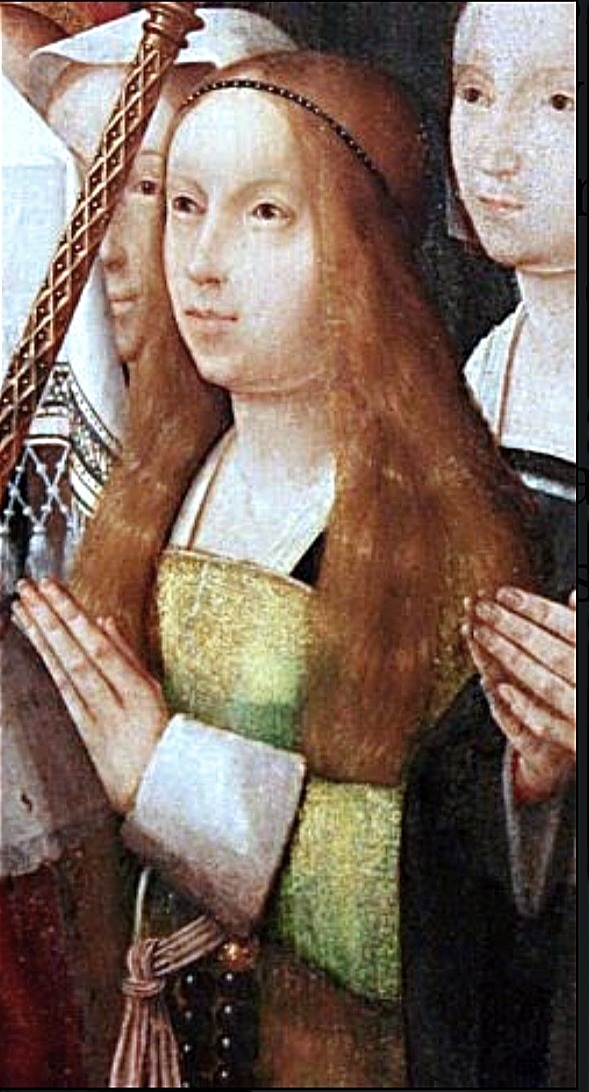
This is an imagen of María of Aragón, Queen of Portugal, from the Tríptico de Nuestra Señora de la Misericordia, Jan Provost, c. 1515.

I presume you wish to hear my thoughts about this painting, since no question was written.
Despite Jan Provoost never provenly leaving Low Countries, surprisingly not so small amount of his art are on Iberian peninsula.
Some of them provenly there since not long after their making, presumably comissioned directly. Not really sure how that comission process exactly worked.
Probably the best quality photos I could find of it are from this webpage.
Which also sheds bit of light about its history.
This painting is believed to be comissioned by Nuno Fernandes Cardoso and his wife Leonor Dias in 1511 when they had ordered construction of Chapel called la Capilla de San Juan de Letrán including the triptych for its altar. Thus it is presumed the painting was comissioned between years 1512-1515, not long after.
I have some issues regarding the royals within.
Number 1 all photos ignore the fifth presumed member of royal family-The girl in red dress on right.


(and fact two more figures are partially hiden behind the altar.)
It is believed by some that from left to right these are Manuel I, Maria of Aragon-his wife, Isabella of Portugal-his eldest daughter, Eleanor of Viseu(Dowager Queen of Portugal-wife of his predecessor) and Beatrice of Portugal-his younger daughter.
Not sure about costumes of everybody, but presumed daughters are dressed in Netherlandish outfits.
While i cannot rule out he was sent some sketches, the faces of these women are consistent with generic figures from other paintings by same artist. With designs which he was reusing.
Thus even if identification as royals is correct, it is not likely for it to be true likeness. (However in some cases, the artists were chosen because their already existing work reminded people of their loved ones. )
But the question on my mind seeing this triptych is-Where the heck are his sons? The painting is believed to be made in betwen 1512-1515.
By this point Manuel and Maria had 3 daughters and 5 boys. People were sexist back then, so idea King Manuel got depicted with wifey and daughters only is cute...but unrealistic.

While we have 7 male figures on left, one is pope(on right), one is old man, then there is monk(infante Henry was cardinal), and 4 more figures, not all of them even showing full face. They are not at front, but at back. Like is it symbolical...or were those boys not important?
Secondly, why would every royal except Manuel be depicted in clothes better fitted for somebody of lesser status?
Another depiction of the same royal family by Netherlandish artist Colijn de Coter is called Fons Vitae, and there despite outfits being netherlandish at least they were what we would expect from depiction of royalty.

Ermine, cloth of gold, crimson also popular with plenty of royals. But here only Manuel wears such suptuous robes.
(the other male with fur-that is not ermine, they specifically sewn those so that the tails appeared regularly.)

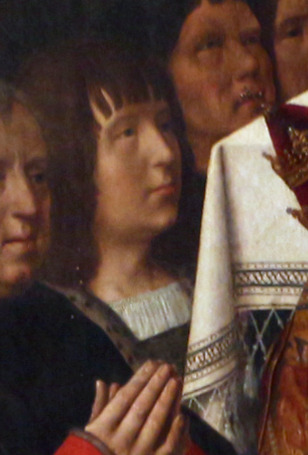
Thus i fear, it might be the case that Manuel is the sole royal depicted.
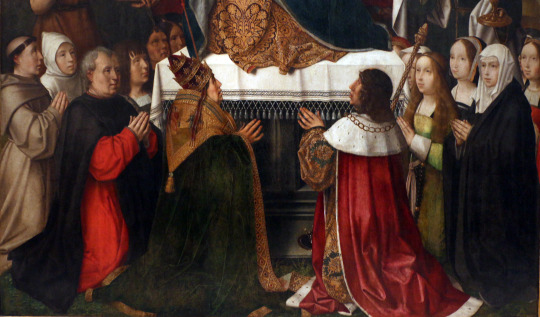
And that we have pope and king in central positions beneath Virgin Mary and people on sides will be the patrons and the family.
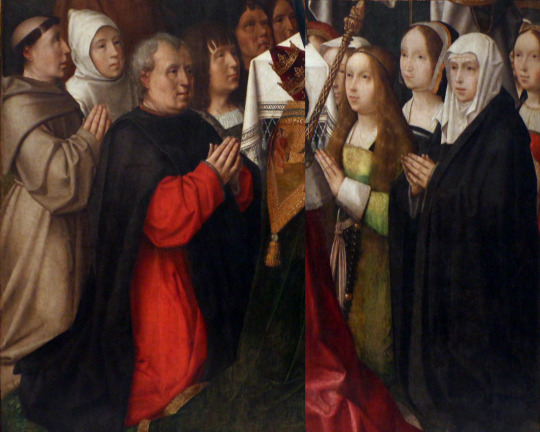
Possibly people who had the painting comissioned. Which would mean the grey-haired man in red and black is ment to represent Nuno Fernandes Cardoso(with his male relatives behind him).
And his wife Leonor Dias, is represented by either the woman in green or the woman in black with white headwear-which is also positioned probably the most at front(with the female relatives behind her.)
Thus in my opinion it could be the case of wrong identification, based upon proximity to the figure of the king and the fact the woman has golden hair (or at least i think she might have) and ribbon on upper part of forehead is bit similiar to how cofia the tranzado was worn with ribbon across forehead.
But even if i was wrong about this female not being ment to represent Maria, the face matches rest of generic saints by this artist. (for example the one on left)

Sorry. This is pretty face, but likely not Maria's.
10 notes
·
View notes
Note
How about CURSED portuguese history facts?
Holy shit I don't know who sent me this but it accidentally got burried under mounds of under asks and I think it's been sitting in my inbox for a year
I feel fully armed for a few cursed facts now given my job lmfao
Here we go
1. The Ginjinha of Lisbon (OF LISBON, not Óbidos) was initially created as a cough medicine. Recomended dose? 6 glasses a day. Ginjinha has around 23% of alcohol. Yeah that sure straightened you up really well (if you look at the posters they have on both doors, the door to the left actually says the recomended dose)
2. During World War II, Lisbon received thousands of jewish refugees. Despite the war, the fact remained that these people came from, compared to our backwards provincial country, progressive places. Do you know what the most shocking thing for lisboners were? Jewish women (who, again, were pretty progressive in comparison) were seen... At cafés. Hordes of men would actually gather around these women who were dead ass just having lunch at a café because portuguese women did not go to cafés alone, as it was considered indicent and a place jsut for men. This was between 1932-1945. There’s a super interesting account of a rare case of a Jewish family that actually stayed here, and the lady describes how she went out for lunch with her mother. Suddenly, the daughter says to her mother “I think we’re starting a revolution” and she turns and sees a row of men just fucking staring at them with their jaws on the floor (source: Lisboa Judaica the book, forgot the name of the author, but it’s Francisco something).
3. Praça do Municipio is where City Hall is located. It’s a late neo-classical building that, when it was unveiled, caused a huge scandal. If you look up at the building's pediment, you will see a bas-relief with several human figures. At the centre, there is a man with his whole dick out. Which, hey, that’s standard in classical imagery, the whole nudity standing for perfection if you follow the Roman canon of art and etc. But ah, my friend, this is Portugal in the 19th century, and my God, were we a backwards country, so this is exactly what generated a HUGE scandal. You see, the problem was WOMEN. They could not possibly see this dick. So, women were forced to cover their eyes when they crossed that square. It became such a scandalous thing, one guy actually set up stand selling fans and veils for women so they could cover their eyes and cross the square without having to look at this dude's genitals. Mind you, they're hard to spot. Rafael Bordalo Pinheiro did a caricature of the event. I can't find it online but I saw it in the book I am about to give you as a source: Lisboa Desconhecida e Insólita, by Anísio Franco.
4. John VI used to hide chicken legs inside his pockets out of fear of being poisoned. He died of poison.
5. Legend says when the statue of José I was unveiled, the one in Praça do Comércio, the queen allegedly said "he looks so ugly". Allegedly, that is why he is wearing a helmet. Yes, the sculptor did nothing about the ugliness, just sort of tried to disguise it. Reminding you that this is a legend. As far as I am aware, the statue was always made with the helmet, but I honestly prefer this version, so that’s the one I tell on my tours lmfao
6. In the 16th century, Manuel I loved collecting animals he knew nothing about, and then gift them to the Pope. We know about the rhinoceros already, which ended up being painted by Dürer, but did you know he also got an elephant? One day, though, he decided it would be a great ideal to have the rhinoceros and the elephant fight each other. He set up an arena in Praça do Comércio. People went buckwild for this. It was like WWE for them. And when the two animals confronted each other.... Nothing happened. Turns out elephants are not really made to fight and the two animals didn't really give a shit about each other. However, elephants are easily spooked, and with a sudden movement from the rhinoceros, that's what happened. The elephant took off from the arena and ran across the entire city back to his caretaker.... And miraculously, did not stomp a single person. The Rhinoceros was declared a winner but only because the elephant quit. People were a little disappointed at this, and ironically enough, it’s the elephant that’s reminded (he had a name but I forgot). Source: another ANísio Franco book, called something like Passeios por Lisboa, I forgot I’m sorry.
7. When the French invaded our country, they found John II's tomb... And beheaded him. No real reason, I guess. The body was put back together and properly buried again by some nuns who kind of felt bad about it.
8. This one is not funny at all. But I'll say this: don't ever look into the Braganza's involvement in slavery if you want to preserve your sanity. It's some of the most horrid shit you'll come across.
EDIT: a while ago I mentioned this in another context, and someone asked for a source. I remember now I said I needed to look it up but, as ever, I forgot. With all my due apologies, here it is: https://expresso.pt/sociedade/2015-12-08-O-segredo-dos-escravos-reprodutores
9. The Marquis of Pombal once stole the waters of Sintra, leaving the people with ONE public fountain in butt fuck nowhere. I've talked about this one on here before but it shows how fucking insane the man was.
10. The expression "ficar a ver navios", which means "to stand by watching the ships pass", is used when someone is waiting for something that will not happen (like, if someone is stood up on a date, you say they stayed there watching the ships pass). It actually comes from the expulsion of the jews in 1497. Manuel I promised jewish people who wished to leave ships to board and go to North Africa. However, he also knew, because he was a fucking idiot but not entirely stupid, that if he expelled the jews, the country's economy would basically collapse, because jewish people held a GREAT number of businesses in not just Lisbon, but major metropolitan centres. So, this was a lie. The ships he promised never came. For months, jewish people went to the Santa Catarina hill every day to look out for ships that would let them board and leave the country. The ships never came, thus, they were "watching the ships pass", but none of them stopping.
Okay this is all I can think of A YEAR LATER LOL
68 notes
·
View notes
Text
On a 2002 board book about Brazil (3)
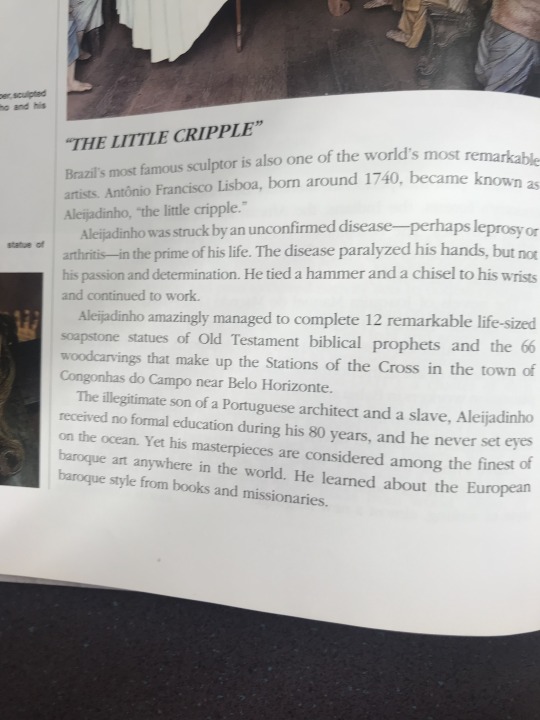
“Brazil’s most famous sculpture is also one of the world’s most remarkable artists. Antônio Francisco Lisboa, born around 1740, became known as Aleijadinho, ‘the little cripple.’
“Aleijadinho was struck by an unconfirmed disease—perhaps leprosy or arthritis—in the prime of his life. The disease paralyzed his hands, but not his passion and determination. He tied a hammer and a chisel to his wrists and continued to work.
“Aleijadinho amazingly managed to complete 12 remarkable life-sized soapstone statues of Old Testament biblical prophets and the 66 woodcarvings that make up the Stations of the Cross in the town of Congonhas do Campo near Belo Horizonte.
“…His masterpieces are considered among the finest of baroque art anywhere in the world. He learned about the European baroque style brown books and missionaries.

“Along with his sculptures, Aleijadinho designed many beautiful churches, each with trademark large, rounded bell towers, altars featuring ornate engravings, and reliefs of angels and saints extending out of ceilings. Several of these churches stand in various cities around the state of Minas Gerais. Two examples are Our Lady of Mount Carmo Church and the São Francisco Chapel. These two churches represent the best of baroque art in Brazil and are considered among the world’s finest. Both of them are found in the historical town of Ouro Prêto, which has been declared a World Cultural Monument by the United Nations.
“Two blocks from the São Francisco Chapel is the town’s monument to Aleijadinho, with his remains buried beneath a marker in a museum church. Some of his wood and soapstone carvings, documents about his career, and the illustrated Bibles he used to study are also displayed in the galleries of the church.”
3 notes
·
View notes
Text
Ouro Preto é uma cidade brasileira situada no estado de Minas Gerais. Foi fundada em 1698, por bandeirantes, e recebeu o nome de "Vila Rica" em 1711, quando foi elevada à categoria de vila. Em 1720, tornou-se a capital da capitania de Minas Gerais.
A cidade teve um papel importante na história do Brasil, pois foi um dos principais centros do ciclo do ouro. A riqueza produzida pelo ouro atraiu para a cidade pessoas de todo o mundo, o que contribuiu para o seu desenvolvimento cultural e arquitetônico.
Em 1823, Ouro Preto foi elevada à categoria de cidade e passou a se chamar "Ouro Preto". Em 1897, perdeu o status de capital de Minas Gerais, que foi transferida para Belo Horizonte.
Atualmente, Ouro Preto é um importante destino turístico, devido ao seu patrimônio histórico e cultural. A cidade é tombada pelo IPHAN, o Instituto do Patrimônio Histórico e Artístico Nacional, e é considerada Patrimônio Mundial da UNESCO.
Aqui estão alguns dos principais marcos históricos de Ouro Preto:
O Museu da Inconfidência, que abriga um acervo dedicado à Inconfidência Mineira, um movimento de independência do Brasil que teve início em Ouro Preto.
A Igreja de Nossa Senhora do Pilar, uma das mais importantes igrejas barrocas do Brasil.
A Casa dos Contos, sede do governo da capitania de Minas Gerais.
A Igreja de São Francisco de Assis, uma das obras-primas do barroco mineiro.
O Museu de Arte Sacra, que abriga um acervo de arte sacra de Minas Gerais.
Ouro Preto é uma cidade rica em história e cultura. A sua arquitetura, sua arte e seu patrimônio cultural fazem dela um destino imperdível para quem visita o Brasil.
Ouro Preto é uma cidade conhecida por suas belas igrejas barrocas, que foram construídas no século XVIII, durante o período do ciclo do ouro. Essas igrejas são obras-primas da arte sacra brasileira, e são consideradas um dos principais atrativos turísticos da cidade.
Algumas das igrejas mais importantes de Ouro Preto são:
Igreja de Nossa Senhora do Pilar: a mais importante igreja de Ouro Preto, e uma das mais importantes igrejas barrocas do Brasil. Foi construída no século XVIII, e seu interior é ricamente ornamentado com ouro e pedras preciosas.
Igreja de São Francisco de Assis: uma das obras-primas do barroco mineiro. Foi construída no século XVIII, e seu interior é repleto de esculturas de Aleijadinho.
Igreja de Nossa Senhora do Carmo: uma igreja de arquitetura barroca, com uma bela fachada ornamentada. Foi construída no século XVIII, e seu interior abriga um altar-mor de autoria de Antônio Francisco Lisboa, o Aleijadinho.
Igreja de Nossa Senhora da Conceição: uma igreja de arquitetura neoclássica, com uma bela fachada ornamentada. Foi construída no século XVIII, e seu interior abriga um altar-mor de autoria de Antônio Francisco Lisboa, o Aleijadinho.
Igreja de Nossa Senhora do Rosário: uma igreja de arquitetura barroca, com uma bela fachada ornamentada. Foi construída no século XVIII, e seu interior abriga um altar-mor de autoria de Antônio Francisco Lisboa, o Aleijadinho.
Além dessas igrejas, Ouro Preto abriga outras igrejas barrocas, como a Igreja de Santa Efigênia, a Igreja de Nossa Senhora das Mercês e Perdões, a Igreja de São José, e a Igreja de São Francisco de Paula.
As igrejas de Ouro Preto são um testemunho da riqueza e da cultura da cidade. Elas são um importante atrativo turístico, e atraem visitantes de todo o mundo.



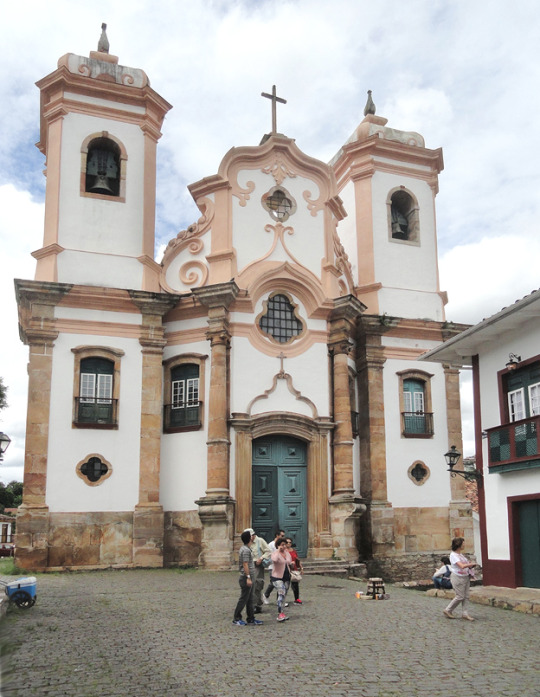
2 notes
·
View notes
Text

I'm delighted with the way you're enjoying and engaging with my photos. Thank you all!!
#The Lisboa photoshoot is doin' numbers and i'm so glad#but the montjuïc death statue is becoming a samhain/halloween classic reblog and i respect that#again thanks a lot!!!
5 notes
·
View notes
Text
https://twitter.com/thehslotnews/status/1681438845747998720?s=12&t=xncmZHa-bd4K6L7BpFhNxw
He did it again in Lisboa 🥵
4 notes
·
View notes
Text

CALÇADA DA BOA HORA
Projeto em parceria com João Cassiano Santos.
Local: Ajuda, Lisboa, Portugal
Tipo: Reabilitação + Ampliação
Datas: 2018 - 2021
Área: 575 m²
Status: Obra Concluída
Realização: ArteTectónica Arquitetura e Desenho
Fotografias: Luís Nobre Guedes
Reabilitação e ampliação de edifício residencial na Ajuda, bairro histórico de Lisboa. O projeto transformou a área do térreo em uma unidade independente de um dormitório, com ligação interior aos pisos superiores e execução de uma nova garagem interior. A iluminação natural do novo apartamento é conseguida através da abertura das lajes preexistentes, criando claraboias e dois pátios laterais.









0 notes
Photo


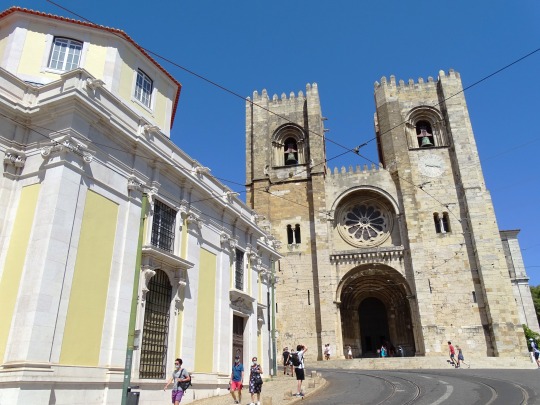
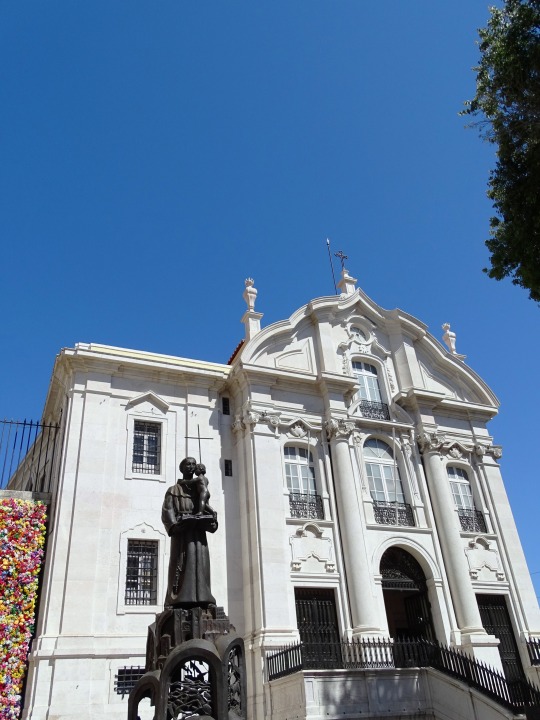


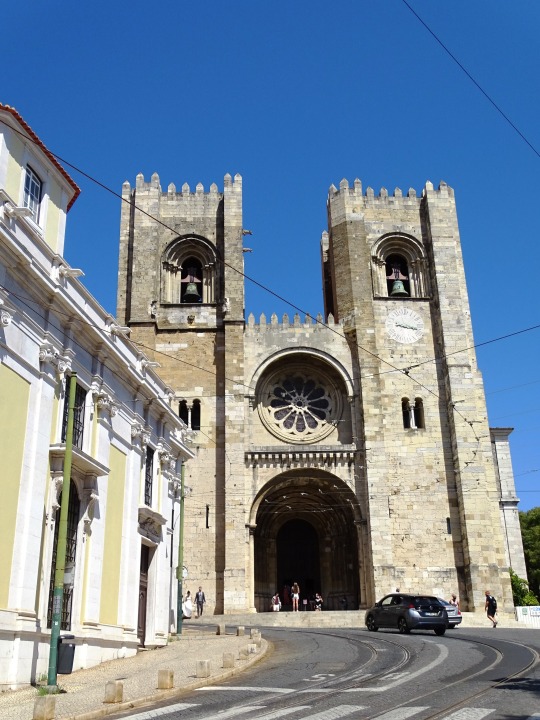
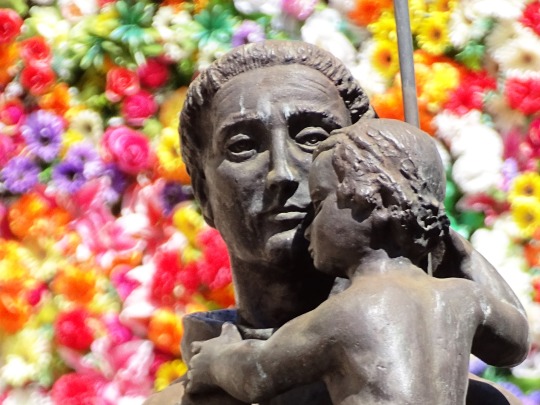
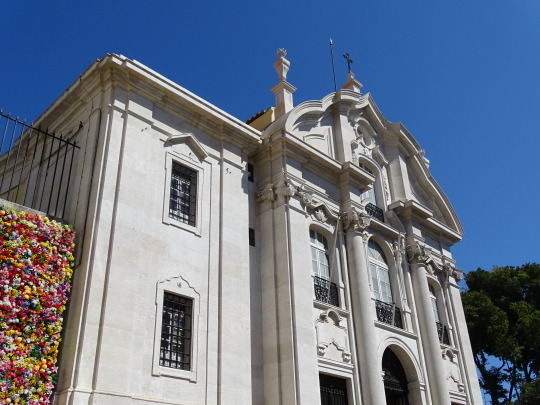
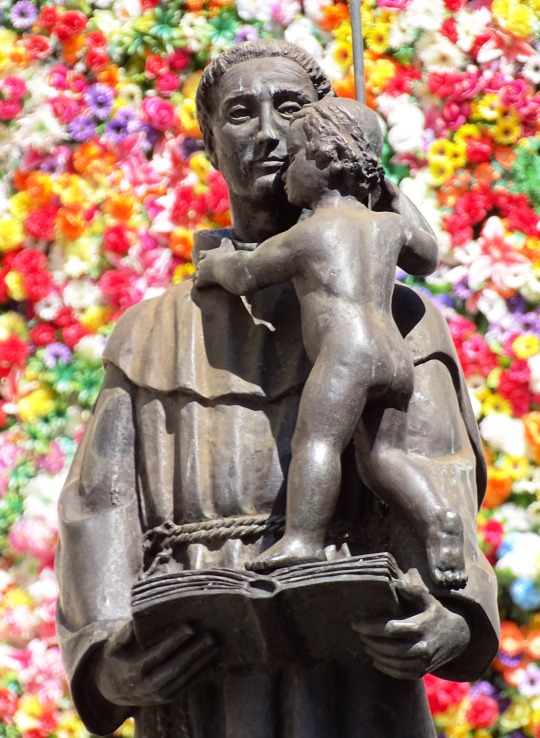
St Anthony's Church, Lisbon
The Church of Saint Anthony of Lisbon (Portuguese: Igreja de Santo António de Lisboa) is a Roman Catholic church located in Lisbon, Portugal. It is dedicated to Saint Anthony of Lisbon (also known in the Christian world as Saint Anthony of Padua). According to tradition, the church was built on the site where the saint was born, in 1195. The church is classified as a National Monument.
Fernando de Bulhões (known as Saint Anthony) was born in Lisbon, Portugal, in 1195, the son of a wealthy family. In 1220, while studying in Coimbra, he entered the Franciscan Order, adopting the name António. His missionary travels would lead him to Italy, where he settled in Padua. Due to his immense popularity, he was canonised less than a year after his death, in 1232.
The site of the family house where Fernando was born, located very close to Lisbon Cathedral, was turned into a small chapel in the 15th century. This early building, from which nothing remains, was rebuilt in the early 16th century, during the reign of King Manuel I. The Lisbon Senate was located on a house just beside the chapel. A religious brotherhood (Irmandade de Santo António) dedicated to the saint was founded in the 16th century.
In 1730, under King John V, the church was rebuilt and redecorated. In the 1755 Lisbon earthquake the Santo António Church was destroyed, with only the main chapel left standing. It was fully rebuilt after 1767 to a Baroque-Rococo design by architect Mateus Vicente de Oliveira. This is the church that can be visited today.
Since 1755, a procession leaves the church every June 13, passes by Lisbon Cathedral, and goes through the slopes of Alfama neighbourhood, located nearby. The 13th of June is Saint Anthony's day and is one of the "Popular Saint Festivities" celebrated by Lisbon. During the morning, special bread is given to the oldest women of each family.
On May 12, 1982, Pope John Paul II visited the church. He inaugurated a statue of Saint Anthony (by sculptor Soares Branco) in the square in front of the church and prayed in the crypt, which marks the spot where the saint was born.
Source: Wikipedia
#St Anthony's Church#Igreja de Santo António de Lisboa#Church of Saint Anthony of Lisbon#architecture#exterior#Lisbon Cathedral#cityscape#tourist attraction#landmark#original photography#summer 2021#Lisboa#Lisbon#Portugal#Southern Europe#vacatioh#travel#public art#sculpture#Statue of Santo António de Lisboa#Flowerwall by Susana Barros#Parede de flores
1 note
·
View note
Text
CONGRATULATIONS TO THE WINNERS OF SET FOUR - ROUND ONE!
MATCH ONE: There Will Be No Miracles Here vs Symphony of the Sixth Blast Furnace
MATCH TWO: Fox Hunt vs Tarpaulin
MATCH THREE: Khajuraho Group of Monuments vs Ranakpur Jain Temple
MATCH FOUR: ปราสาทสัจธรรม (The Sanctuary of Truth) vs Grande Panorama de Lisboa
MATCH FIVE: Heroic Head of Pierre de Wissant, One of the Burghers of Calais vs The Weather
MATCH SIX: The Daughters of Edward Darley Boit vs If this is art
MATCH SEVEN: Statue of Vincent and Theo van Gogh vs Jeanne d’Arc écoutant les voix (Joan of Arc listening to the Voices)
MATCH EIGHT: Fountain vs Judith Slaying Holofernes
(matchups for round two under the cut)
SET FOUR - ROUND TWO
MATCH ONE: Symphony of the Sixth Blast Furnace vs Tarpaulin
MATCH TWO: Khajuraho Group of Monuments vs ปราสาทสัจธรรม (The Sanctuary of Truth)
MATCH THREE: The Weather vs The Daughters of Edward Darley Boit
MATCH FOUR: Statue of Vincent and Theo van Gogh vs Judith Slaying Holofernes
16 notes
·
View notes
Text






Matthew James Bellamy (Cambridge, 9 de junio de 1978) es un cantante, compositor, pianista, guitarrista y productor, más conocido por ser el líder de la banda británica de rock Muse. Es a menudo reconocido por su desenvoltura en el escenario, su alto rango vocal, su habilidad con la guitarra y por sus composiciones relacionadas con teorías conspirativas, sociedades distópicas, ambientes futuristas y el apocalipsis.
CULTO
Las guitarras de Matt Bellamy: una radiografía al sonido de Muse
Alexis Paiva Mack
17 AGO 2019 03:50 PM
Muse Performs At Rock In Rio in Lisbon
British rock band Muse lead singer Matthew Bellamy performs at the Rock in Rio Lisboa 2018 music festival in Lisbon, Portugal, on June 23, 2018. ( Photo by Pedro Fiúza/NurPhoto)
El músico ha ocupado más de 50 instrumentos desde la formación de su banda. Entre ellos, la firma Manson Guitar Works se ha mantenido como un actor protagónico en la creación de ambientes espaciales, los cuales ya son un sello distintivo de los británicos.
En junio de 2019, el directorio de Manson Guitar Works anunció que Matt Bellamy se convirtió en el nuevo accionista mayoritario de la empresa. Tal acto no pareció ser la respuesta a un simple fin económico, sino que más bien reflejó la fidelidad que el músico ha mantenido con la marca por 20 años.
https://twitter.com/Manson_Guitars/status/1137012333375627265
Su primer acercamiento con los instrumentos de la firma —que ya había construido modelos para Jimmy Page y John Paul Jones de Led Zeppelin— fue durante la época de Origin of Symmetry (2001), un álbum que el periodista Roger Morton de la revista NME calificó como "la pesadilla hermosa de la banda más distorsionada e intensa de Gran Bretaña". En este segundo lanzamiento de estudio —el primero fue Showbiz (1999)— abundan los sonidos electrónicos que más tarde se convertirían en un sello distintivo de la agrupación inglesa.
Durante la gira de promoción del álbum en 2001 y 2002, el músico ocupó cuatro instrumentos de la marca. La primera que Hugh Manson construyó para el artista fue la Delorean, una guitarra que recibe su nombre en alusión a la máquina del tiempo que Marty McFly ocupó en Back to the Future (1985). Según una entrevista que el fabricante dio a Australian Guitar Magazine, Bellamy quería un instrumento que tuviera el sonido de las cápsulas P-90 de Gibson, pero con su forma inspirada en una Fender Telecaster. Esa búsqueda por un modelo único llevó a que Manson construyera el cuerpo en acabado de aluminio y a pesar de que esta fue retirada de los conciertos en el tour de Black Holes and Revelations (2006), durante 2011 se presentó en vivo con una nueva versión del instrumento.
Manson construyó la Laser con las mismas características técnicas que la Delorean, pero con la diferencia de que el acabado está compuesto por pedazos de vidrio quebrado que dejan entrever luces rojas, las cuales aumentan su intensidad a medida que se toca más fuerte. El inglés la ocupó en vivo por última vez el 6 de agosto de 2007 en el Madison Square Garden de New York, durante el Black Holes and Revelations Tour.
La 007 fue la primera guitarra que Manson construyó con efectos incorporados, la cual tiene en su interior los circuitos de un Zvex Fuzz Factory y un Wah Probe de la misma marca. Este último funciona a través de una placa en el costado superior derecho del cuerpo, la cual le permite manejar la intensidad del filtro. Asimismo, el instrumento tiene una pieza lineal con la que puede manipular un Digitech Whammy, a través de un sistema MIDI que envía los datos. De esta manera, el músico puede activar diferentes sonidos de manera dinámica y accesible, es decir, sin pisar esos efectos específicos en formato pedal. Además, cuenta con un Fernandes Sustainer junto a la cápsula Seymour Duncan Hot P90 del cuello, el cual le permite mantener el sonido de las notas de manera indefinida (este se convirtió en un elemento vital en la mayoría de sus guitarras). En una entrevista a Guitar Player en julio de 2010, Bellamy expresó que ya no suele ocuparla en conciertos, debido a que es "extremadamente pesada".
Antes de que Hugh Manson fabricara los instrumentos con las especificaciones del artista, Bellamy compró de segunda mano una guitarra de siete cuerdas para interpretar "Citizen Erased", canción que requiere la afinación AADDGBE.
0 notes